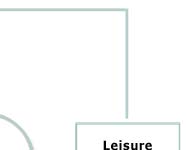Close Window | Right click this page to print.
A. Innovation
Science discovers information leading to the development of computer technologies.
B. Diffusion
Elements in all social institutions incorporate new technologies because they allow for cost savings, better communication, and expanded areas of influence. Computers become an everyday part of economic life, educational organizations, and political activities.
C. Adoption
Individuals are impacted as they go about their daily lives. Students must use computers to find information or write papers. We can’t fix our own cars anymore because that requires sophisticated equipment. Living in society requires use of computers whether we like it or not.
D. Emergent Properties
While some people resist computers most people come to enjoy the benefits. Our leisure time revolves around new technologies – computer games, surfing the Internet, home theatre systems, digital photography. Our lives are different than they were even five years ago because our use of technologies is different.
F. Flow of Information Between Institutions
Because all of our institutions are connected, changes in one result in changes in the others. To remain consistent, the patterns of activities that make up each institution are altered as we alter our behavior. Technology changes the way people behave and changes in behavior result in institutional change.
Move your cursor over each letter to see how it affects other parts of the system.
|
|
|
|
|
|
|
|
|
|
|
|
|
|
|
|
 |
|
|||||||||||||
 |
|
|
|
|||||||||||
|
|
|
|||||||||||||
 |
|
 |
|
|||||||||||
|
|
|
|||||||||||||
|
|
|
|
|
|||||||||||
|
|
|
 |
|
|||||||||||
|
|
|
|||||||||||||
|
|
|
|||||||||||||
 |
|
|
|
|||||||||||
|
|
|
|||||||||||||
|
|
|
|
 |
|
||||||||||
|
|
|
|||||||||||||
|
|
|
|||||||||||||
|
|
|
|||||||||||||
|
|
|
|||||||||||||
|
|
|
|||||||||||||
|
|
|
|||||||||||||
|
|
|
|||||||||||||
|
|
 |
|
|
|||||||||||
|
|
|
|||||||||||||
|
|
|
|||||||||||||
|
|
|
|||||||||||||
Close Window | Right click this page to print.